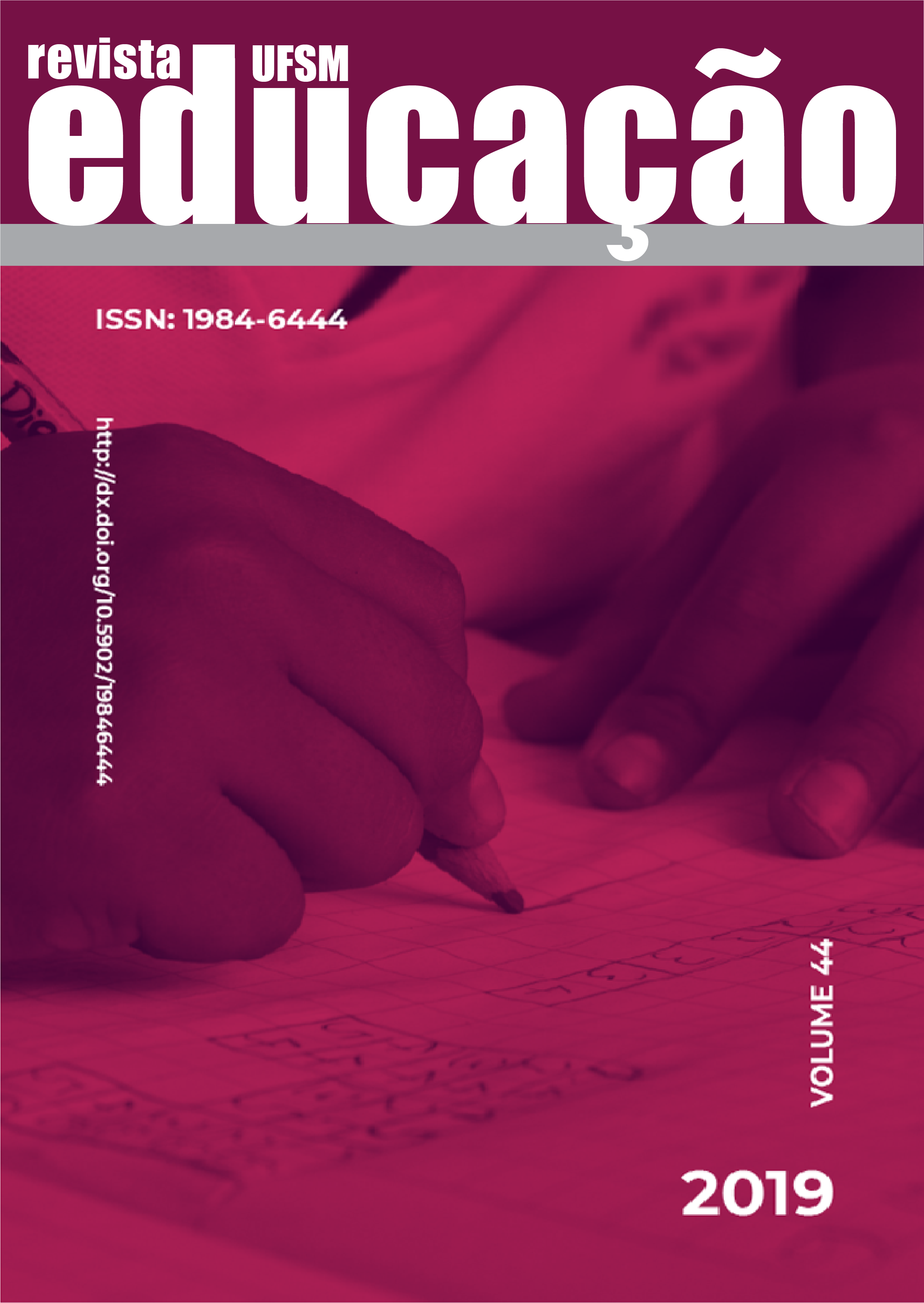The biographematic method: new scripture in education
DOI:
https://doi.org/10.5902/1984644429466Keywords:
Method, Biographeme, Scripture.Abstract
This article proposes a method that deals with the way we write about the authors of the educational area. This method is entitled “Biographematic Method” to be constituted from the notion of biographeme, presented by Roland Barthes in Sade, Fourier, Loyola (2005a), Camera Lucida (1984) and The Preparation of the Novel (2005c). The article is justified by thinking of new ways of expressing writing in Education. Its conclusion is expressed in the articulation, on the theoretical plane, between the notion of biographeme and what Gilles Deleuze and Félix Guattari (1992) call conceptual personae, aesthetic figure and psychosocial type. As the article argues, when a writting appropriates an aesthetic figure or a conceptual personae or a psychosocial type, it necessarily doesn't appropriate the author as a Subject, which is a condition for the task of finding (inventing) biographematical traits.References
BARTHES, Roland. A câmara clara. Rio de Janeiro: Nova Fronteira, 1984.
BARTHES, Roland. O grão da voz. São Paulo: Martins Fontes, 2004a.
BARTHES, Roland. Escritores, Intelectuais, Professores. In: BARTHES, Roland. O rumor da língua. São Paulo: Martins Fontes, 2004b, p. 385-411.
BARTHES, Roland. Sade, Fourier, Loyola. São Paulo: Martins Fontes, 2005a.
BARTHES, Roland. Preparação do Romance vol I. São Paulo: Martins Fontes, 2005b.
BARTHES, Roland. Preparação do Romance vol II. São Paulo: Martins Fontes, 2005c.
CAMPOS, Haroldo de. Metalinguagem & Outras Metas. São Paulo: Perspectiva, 2006.
CORAZZA, Sandra Mara. Fantasias de escrileitura: devir-infantil de currículos nômades (Projeto de pesquisa apoiado pelo Conselho Nacional de Pesquisa (CNPq), na modalidade de Produtividade em Pesquisa – PQ). Porto Alegre: UFRGS, 2007.
CORAZZA, Sandra Mara. Introdução ao Método Biografemático. In: COSTA, L. B.; FONSECA, T. M. G. (Org.). Vidas do Fora: habitantes do silêncio. Porto Alegre: [S.n.], 2010, p. 85-107.
DELEUZE, Gilles; GUATTARI, Félix. Kafka: por uma literatura menor. Rio de Janeiro: Imago, 1977.
DELEUZE, Gilles; GUATTARI, Félix. O que é a filosofia? Rio de Janeiro: 34, 1992.
FEIL, Gabriel Sausen. Procedimento Erótico, na Formação, Ensino, Currículo. Jundiaí: Paco Editorial, 2011.
PERRONE-MOISÉS, Leyla. Aula inaugural da cadeira de semiologia literária do Colégio de França. In: PERRONE-MOISÉS, Leyla. Barthes. São Paulo: Cultrix, 2007.
PROUST, Marcel. Em busca do tempo perdido vol I. No caminho de Swann. Rio de Janeiro: Globo, 1967
Published
How to Cite
Issue
Section
License
Declaration of originality
We declare that all articles present in the journal Educação (UFSM) are originals and were not submitted for publishing on any other publication, as a whole or a fraction. We also declare that, after being published by Educação (UFSM), a paper will not be submitted to another journal within two years. After this time, our journal transfers the publishing rights to the authors, with a permit granted by the Editorial Council.
We also acknowledge that the originals’ submission to Educação (UFSM) implies on a transference of copyright for physical and digital publishing to the journal. In case of noncompliance, the violator will receive sanctions and penalties predicted by the Brazilian Copyright Protection Law (n. 9610, dated 19/02/98).
Attribution 4.0 International (CC BY 4.0)
This license lets others remix, transform, and build upon the material for any purpose, even commercially, and copy and redistribute the material in any medium or format.

This work is licensed under a Creative Commons Attribution 4.0 International (CC BY 4.0)






